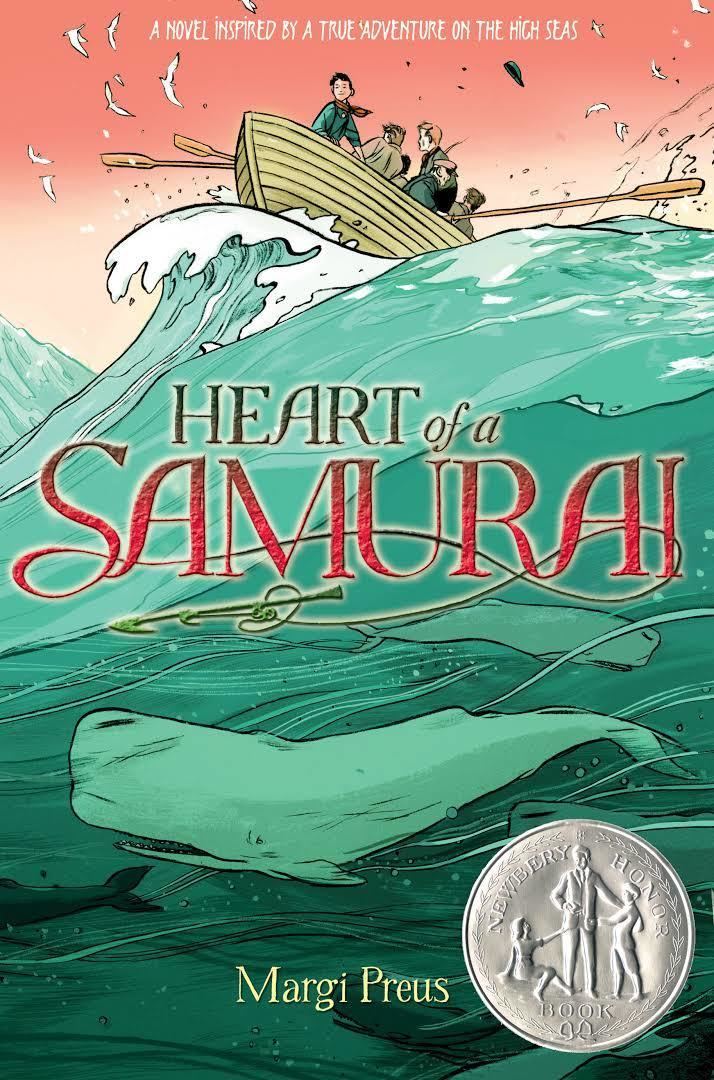8 /10 1 Votes8
Language English Pages 282 pp Originally published 2010 Genre Novel | 3.9/5 Goodreads 4.2/5 Barnes & Noble Media type Print ISBN 978-1-4197-0200-6 Country United States of America | |||||||||||||||||||||||||||||||||
 | ||||||||||||||||||||||||||||||||||
Illustrator Manjiro Nakahama, Jillian Tamaki Similar Margi Preus books, Nakahama Manjirō books, John Newbery Medal winners | ||||||||||||||||||||||||||||||||||
Heart of a samurai book trailer
Heart of a Samurai is a 2010 youth historical nonfiction by author Margi Preus with illustrations by Manjiro Nakahama (primary illustrator) and Jillian Tamaki (cover art). Heart of a Samurai has received numerous awards and honors including being named as a Newbery Medal Honor Book in 2011. Heart of a Samurai is also a nominee for 2014-15 Maud Hart Lovelace Book Award, Division II (for grades 6-8).
Contents
- Heart of a samurai book trailer
- Heart of a samurai by margi preus book trailer
- Plot
- Characters
- Critical Reception
- Awards
- Authors background
- References
Heart of a samurai by margi preus book trailer
Plot
Heart of a Samurai is based on the real story of a Japanese boy, who is believed to be the first Japanese to land in America. In 1841, Manjiro Nakahama (1827-1898), a young fisherman at the age of fourteen, lived in a remote, poor fishing village in Japan. He dreamed of being a Samurai, a royal title bequeathed solely by inheritance. The fishing ship he worked on, encountered a storm and ended up drifting out to the sea until it landed on an unknown island. After months staying on the island, Manjiro and his crew were rescued by Captain Whitfield, aboard the John Howland, an America whaling ship. Manjiro worked with the whale team and quickly gained Captain Whitfield’s admiration. By the time they reached Hawaii, the duo had developed a special relationship. Captain Whitfield wanted to adopt Manjiro and go back to America with him. In spite of the Japanese empire having portrayed foreigners as evil and barbarians, Manjiro was determined to see a new world through his adventure by stepping out of his comfort zone and leaving his crew members behind. Upon landing in America, Manjiro found the majority of Americans he encountered had shown kindness toward him, however, some others discriminated against him as a foreigner. He worked hard at school and took care of his new family while Captain Whitfield was at sea. Finally, a chance to go home appeared, he quickly jumped on it. On his return to Japan, he was imprisoned for being a “spy” of a foreign country. Japan had isolated itself from the world for more than two hundred years by then. As the Japanese dynasty changed, the new emperor admired Manjiro’s knowledge of the world and of the English language. He became the teacher for the emperor’s children. Eventually, Manjiro taught English, Math, sea navigation, and shipbuilding; he wrote and translated English books into Japanese. Gradually, he initiated the whaling industry to Japan and became an interpreter of the first Japan Embassy. Manjiro's influence on the political powers eventually lead to the end of Japan's isolationism in 1854. Manjiro, in a rare honor, was awarded the title of Samurai, despite him being born a fisherman.
Characters
Critical Reception
Heart of Samurai received many compliments and awards. As Daniel Kraus wrote, "It’s a classic fish-out-of-water story (although this fish goes into the water repeatedly), and it’s precisely this classic structure that gives the novel the sturdy bones of a timeless tale." Roger Sutton had said, in The Horn Book Magazine that “the facts of Manjiro's life are inherently dramatic (later episodes include a stop at the Gold Rush, a mutiny, and a return to Japan), but Preus keeps her hero human-sized and empathetic, allowing readers to see and learn along with him the ways of a strange new world." Michael Cart, the author of Young Adult Literature: From Romance to Realism, asserts that it is “a more mature, sophisticated, and artful historical fiction, one that is honest about the realities of history for older YAs” is needed.
Awards
Author’s background
Margi Preus is an America writer who specializes in children books and playwrights. She also writes comic plays, adaptations, libretto and short fiction. Preus has directed Colder by the lake comedy Theatre for twenty years in Duluth, Minnesota. She graduated from Binghamton University, SUNY. She is a children’s literature instructor at the College of St. Scholastica, school of Education, and University of Minnesota-Duluth in her leisure time. Preus discovered Manjiro’s true story upon doing research for her previous picture book, The Peace Bell, at the local library in Japan. She was attracted by the courage of a poor teenage fisherman, who overcame hardship during a ten-year journey exploring America with a dramatic end being awarded an unlikely honorable title as Samurai, a royal honor by inherence. Manjiro is believed the first Japanese to set foot in America. The book highlights the peace and friendship between two nations on a civil level. Preus’ other books are West of the Moon in 2014 (for ages 9–12), Shadow on the Mountain in 2012, Celebritrees: Historic & Famous Trees of the World in 2011 (for ages 4–8). The Peace Bell in 2008 (ages 4–8). Preus had previously published several books long before her name became recognizable. She wrote Visions in Near-sleep in 1983, and had co-authored with Lise Lunge Larsen for a picture book, Legend of the Lady Slipper in 1999 (ages 4–8). She had co-authored with Ann Treacy for Sacred Words: A Collection of Prayers from Around the World in 2001 as well as co-edited together for A Book of Grace in 2002 (for young adult to adult).
